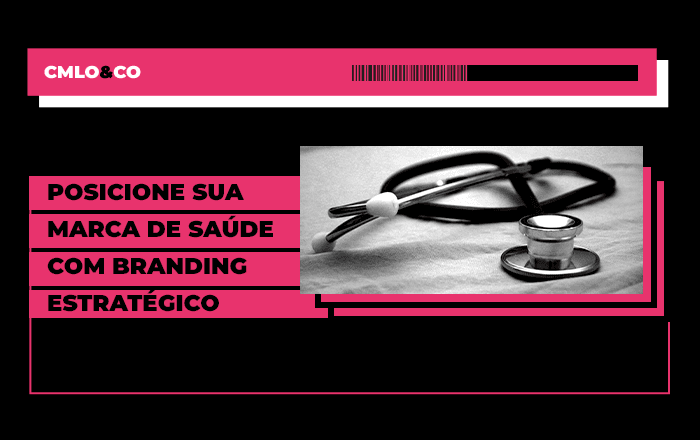Have you ever wondered how users feel when they browse your site? Do they find what they're looking for, become interested in your content and become loyal customers? Or do they get frustrated, give up and never come back?
These issues are directly related to user experience, an increasingly important concept for the success of any online business. After all, user experience (or UX) is one of the most important factors in determining the engagementconversion and visitor loyalty.

But what exactly is user experience? How can it be optimized and improved? And how can the design of your website influence this?
In this article, we'll answer these questions and give you some practical tips on how to apply the concept of UX to your company's website to optimize your results. Let's go?
Understanding the concept of user experience
We can define user experience as the set of perceptions, feelings and reactions that a person has when interacting with a product, service or system. Its aim is to offer solutions that meet users' needs, expectations and preferences, providing a pleasant, easy and satisfying interaction.
On websites, UX involves everything from the moment the user accesses the homepage to the moment they leave the site or perform a desired action, such as buying a product, subscribing to a newsletter or getting in touch.
It's worth noting that the user experience is influenced by various factors, such as the content, design, usability, functionality, accessibility, reliability and attractiveness of the site.
Each of these elements contributes to creating a positive or negative impression on the user, which can result in satisfaction or dissatisfaction.
Therefore, to offer a good user experience on your site, you need to take care of all these aspects. What's more, you need to ensure that they are in line with your visitors' expectations, needs and objectives.
The 5 elements of user experience
As we have seen, the user experience is made up of several interacting factors. To make it easier to understand and apply this concept, we can divide UX into five main elements:
Attractiveness
Attractiveness is the extent to which your site attracts attention, arouses interest and generates positive emotions in users.
Therefore, we can say that attractiveness is related to the design the site's visuals, colors, images, videos, icons and other graphic elements that make up your brand's visual identity.
In other words, an attractive website is one that looks professional, harmonious and consistent with your market segment.
Accessibility
Accessibility refers to how easy your site is for users to find, access and use. This ease, moreover, must be independent of the physical, cognitive or technological limitations that people may have.
Accessibility is therefore related to the structure, organization and coding of the site. These elements must also follow good practices and recommended web standards.
In other words, an accessible website is one that has a domain that is easy to remember and type, and that works well on different devices and browsers (responsive).
In addition, it is one that uses legible and contrasting fonts, and has clear and functional links. An accessible website should also offer alternatives for multimedia content (such as subtitles, transcripts and descriptions) and allow the use of assistive tools (such as screen readers).
Reliability
Reliability, in turn, is the extent to which your site conveys credibility, security and trust to users. The element is related to the content, reputation and authority of the site, which must demonstrate knowledge, quality and consistency.
Generally speaking, a reliable website is one that has original, relevant and up-to-date content, and that cites the sources of the information presented. It should also have a clear and transparent privacy policy and rely on security protocols to protect user data, such as HTTPS, for example.
In addition, it can also feature testimonials from satisfied customers and display certification or award seals.
Intuitiveness
Meanwhile, the intuitiveness of the site is related to how easy it is for users to understand, learn and use.
In other words, the concept is directly linked to the usability, navigability and interactivity of the site, which should provide simple, fast and efficient navigation.
An intuitive website is one that has a well-defined and visible main menu, that has a logical and coherent hierarchy of information, and that has clear and direct language. We mustn't forget that it must also have a consistent design on every page.
Functionality
Finally, there is functionality. This element tells you how well your site is able to meet users' needs, desires and objectives.
In short, functionality relates to the purpose, value and usefulness of the site. These aspects must offer solutions, benefits and advantages to visitors.
A functional website is one that has a clear and defined objective and solves users' problems or pains. In practice, it delivers what it promises, exceeds users' expectations and generates positive results (such as conversions, sales, leads, etc.).
How can you apply the concept of UX to your company's website? 7 tips to put it into practice
Now that you know what user experience is and what its main elements are, let's see how you can apply this concept to your company's website and improve its online performance. Check out these seven essential tips:
1. Offer quality content
Content is the main reason why people visit your website, isn't it? So it should be of high quality, relevant to your target audience and aligned with your value proposition.
In addition, it must be well written, well formatted and well distributed on the pages of your site, following a content marketing strategy.
Also remember to produce varied content, such as texts, images, videos, infographics, podcasts and more. This is because by diversifying the type of content, you can cater to the different profiles and preferences of your users.

2. Have a responsive website
Nowadays, people use various devices to access the internet, such as computers, tablets and smartphones.
That's why your site must be responsive. In other words, it should be able to adapt automatically to the size and resolution of each device's screen.
This way, you can guarantee a good user experience in any situation and avoid losing visitors due to visualization or compatibility problems.
3. Adopt good SEO practices
SEO (Search Engine Optimization) is the set of techniques and strategies aimed at improving the positioning of your site in search engine results, such as Google, for example.
By applying good SEO practices to your website, you increase the chances of being found by users searching for your products or services on the internet. In addition, you improve the quality and relevance of your content, which contributes to the user experience.
Among the many good SEO practices you can adopt on your site, the main ones are using keywords relevant to your niche, creating attractive titles and descriptions for your pages and using appropriate HTML tags to structure your content.
4. Create fast-loading pages
The speed at which your website pages load is another factor that directly impacts the user experience. After all, nobody likes waiting a long time to access content, especially if they are using a mobile or limited connection.
That's why it's essential to create fast-loading pages that don't take more than a few seconds to open. To do this, you can use tools such as Google PageSpeed Insights, which analyzes your site's performance and suggests improvements to speed up its loading.
In addition to the tool, you can also put into practice some of the following tips to increase the speed of your site:
- Optimize the size and quality of images and videos on your site;
- Use caching tools to reduce the number of requests to the server;
- Use a quality hosting service for your site.
5. Take care of your site's security
Security is an essential aspect of the user experience on your website. After all, nobody wants to run the risk of having their personal or financial data stolen or exposed on the internet, do they?
That's why you should protect your site against cyber attacks by using security protocols such as HTTPS (which encrypts the information exchanged between the user and the server), installing digital certificates (which validate the authenticity of your site) and constantly updating your site's software and plugins.
6. Provide intuitive navigation
Navigation is the way users move around your site in search of the information or actions they want to take.
To offer a good user experience in this respect, you must provide intuitive navigation. This means that users can find what they are looking for quickly and easily, without getting lost or frustrated.
To provide intuitive navigation, you can use elements such as a clear and organized main menu with the main categories and subcategories of your site.
In addition, you can use a visible and functional search bar that allows users to type in keywords related to your content, a footer with useful information and links to your most important pages, among others.
7. Integrate your website with the company's social networks
Social networks are powerful channels for promoting your website and interacting with your audience. It is therefore important to integrate your website with your company's social networks, facilitating sharing and communication between your users and your brand.
How can you do this? Try, for example, using features such as sharing buttons on your pages and posts, which allow users to share your content on their favorite networks.
Also try using widgets from your social networks on your site, showing your latest posts and updates.
How about optimizing the user experience on your site?
As you've seen in this article, user experience on websites is a determining factor in the success of your online business. A website with a good UX is capable of attracting, engaging and converting your visitors into loyal customers and promoters of your brand.
But how do you optimize the user experience on your site? How do you apply all the tips we've seen in this article efficiently and professionally? How do you ensure that your site is always up to date and in line with the best UX practices?
This is exactly where CMLO&CO comes in, marketing and advertising agency specialized in UX Design. Our team of qualified and experienced professionals will analyze your site, understand your needs and objectives and propose customized solutions to create or redesign your site with a focus on user experience.
Don't waste time and contact CMLO&CO today! Transform your business through efficient and innovative communication, capable of helping you achieve your goals. Talk to our marketing and advertising experts.







